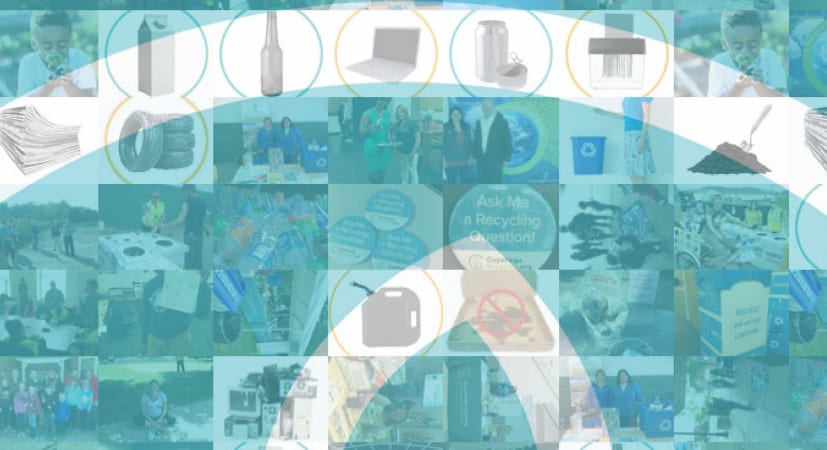Recycling’s roots are deep here in Cuyahoga County because of our industrial and steel-making heritage. Collecting scrap metal to feed steel and aluminum mills was an early recycling enterprise that continues to this day. Nowadays, recycling is prominent in our communities and in our commercial businesses.
Annually, we divert more than 1.4 million tons of waste from landfills through recycling, composting and other waste reduction activities. Every step in the recycling process, from collection and processing to manufacturing and sale of recycled products, creates a chain of economic activity that results in business development, jobs, tax revenue and economic growth. Recycling also is critical for conserving natural resources, energy and reducing greenhouse gas emissions.
The Past: Meeting Goals
Our recycling system has grown in sophistication and complexity in the 30 years since the Ohio legislature passed its comprehensive solid waste law. The law was designed to reduce reliance on landfills by increasing recycling. State goals and the public’s demand for recycling were the impetus behind the development of the many curbside recycling programs in the 1990s. This led to the introduction of automated collection and single stream recycling in the 2000s and technology upgrades to the processing facilities that sort our curbside materials in this decade.
The Present: A Shift in Markets
While all this was happening on the collection side, recycling markets also changed. As manufacturing moved oversees so did the demand for scrap materials used in production. As a nation, we became reliant on China to buy the mixed plastic and mixed paper we collected from the curb. This cycle was upended in 2018 when China’s National Sword Policy went into effect, restricting their imports of recyclables. Our local recycling processors felt the impact even if they never sold material to China. Reduced market demand and excess supply has caused commodity prices to fall while curbside material must be sorted to cleaner and cleaner levels in order to find a market.
The Future: Recycling Evolution
What happens next is unclear but the importance of recycling to the global economy and manufacturing will not change. Mills still need scrap metal, paper, cardboard, glass and some plastic grades. Collection methods may continue to evolve in order to supply mills with cleaner materials. Contracting methods are already changing to accommodate cost sharing. We have weathered downturns in the market before. This one will require waiting for new domestic recycling markets to open. This is beginning to happen as new recycled paperboard mills are built, including one here in Ohio that will open at the end of this year.
Today, our focus at the District is to help residents understand the importance of recycling properly and its limits. Renewed emphasis is being placed on the first two R’s – Reduce, Reuse and now Refuse – especially when it comes to single-use, non-recyclable plastic. We are also focused on helping public officials anticipate and plan for recycling cost increases.
The District has been and will continue to be the leading resource for information, expertise and programs that support sustainable materials management in Cuyahoga County. We are here to lead and support the community through this transitional period.
POSTED ON:
